Exomars landing: a geomechanical approach to impact characterization
- 1International Research School of Planetary Sciences, Università G. D’Annunzio, Pescara, Italy (adriano.tullo@unich.it)
- 2Thales Alenia Space Italia, Torino, Italy
- 3ESA/ESTEC, Noordwijk, The Netherlands
Introduction: This abstract deals with analysing the interaction between the ExoMars lander and the surface deformation at the touchdown in the Oxia Planum region of Mars. The analysis of ExoMars landing has been conducted by IRSPS under Thales Alenia Space Italia and ESA by means of computer simulations and physical test with a lander mock-up. The mission involves landing via retro-rockets to slow down the lander before impact. Despite the deceleration, the impact will transfer significant energies to the ground, exceeding those experienced in past missions.
Landing dynamics: Several variables of the descent phase influence the impact dynamics, such as the linear and the rotational terminal speeds, the inclination along the three axes, and the mass. We employed multi-body physics simulations to translate these input parameters into touchdown dynamics and ground stresses. The parameters and topographic data have been used in Unity and MATLAB environments to simulate the impacts. According to the Engineering Constraint of the mission [1], the topography has been modelled with slope values up to 20°.
Geotechnical parameters: Estimating the geotechnical characteristics of Martian soil remains a rather complex challenge. After detailed mapping of the landing ellipse and a careful identification of the surface lithologies, we simulated different lithotypes: “Regolith” (poorly-sorted sand to cobble, loose, non-lithified material), “Mudstone” (silty marl and lithified clays with low calcite content), “Sandstone” (sandstones from deltaic and fluvial environments), “Halite” (evaporites from lacustrine/flood plain and deltaic interchannels), “Tuff” (pyroclastic material) and “Basalt” (lava flows). The geotechnical parameters have been extracted from terrestrial analogues and simulants and summarised in Table 1.
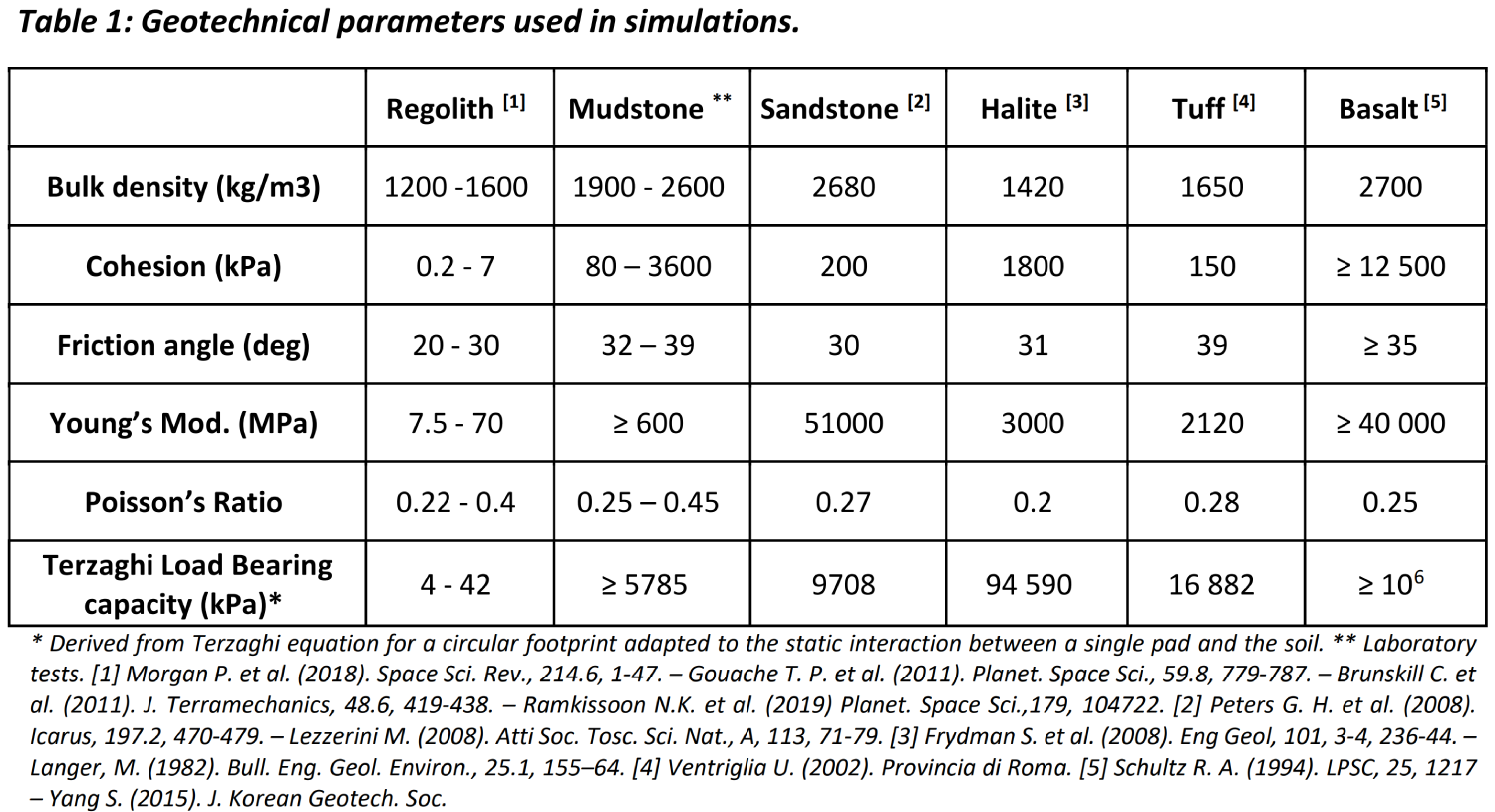
Geomechanical simulations: The numerical modelling of the stressed terrain has been performed with the Itasca FLAC3D (Fast Lagrangian Analysis of Continua in 3 Dimensions) software. One hundred and eighteen different simulations have been performed, tuning the landing variables concerning the impact dynamics, the geotechnical parameters, and the topography. The input conditions of the individual tests were composed through the programming languages FLAC3D-embedded FISH and Python. Apart from “Regolith cases”, the simulations resulted in minimal and negligible displacement (below 1 mm), although it does not exclude minimal surface fracturing of the rock. The results indicate that in none of the cases did the pressures reach the bearing capacity of the lithotypes, remaining in the domain of elastic deformations. In “Regolith” cases, due to the lower capacity, the excavation of the pads reached a range of values up to 10 cm with low terrain slopes (Fig.1) and up to 20-25 cm at higher inclinations. The cases where the first impact occurs on a single pad showed the highest displacement rates, especially when the Landing Platform is inclined perpendicularly to the ground. Subsequent contacts with other pads resulted in lower displacements due to energy dissipation and impact geometry.
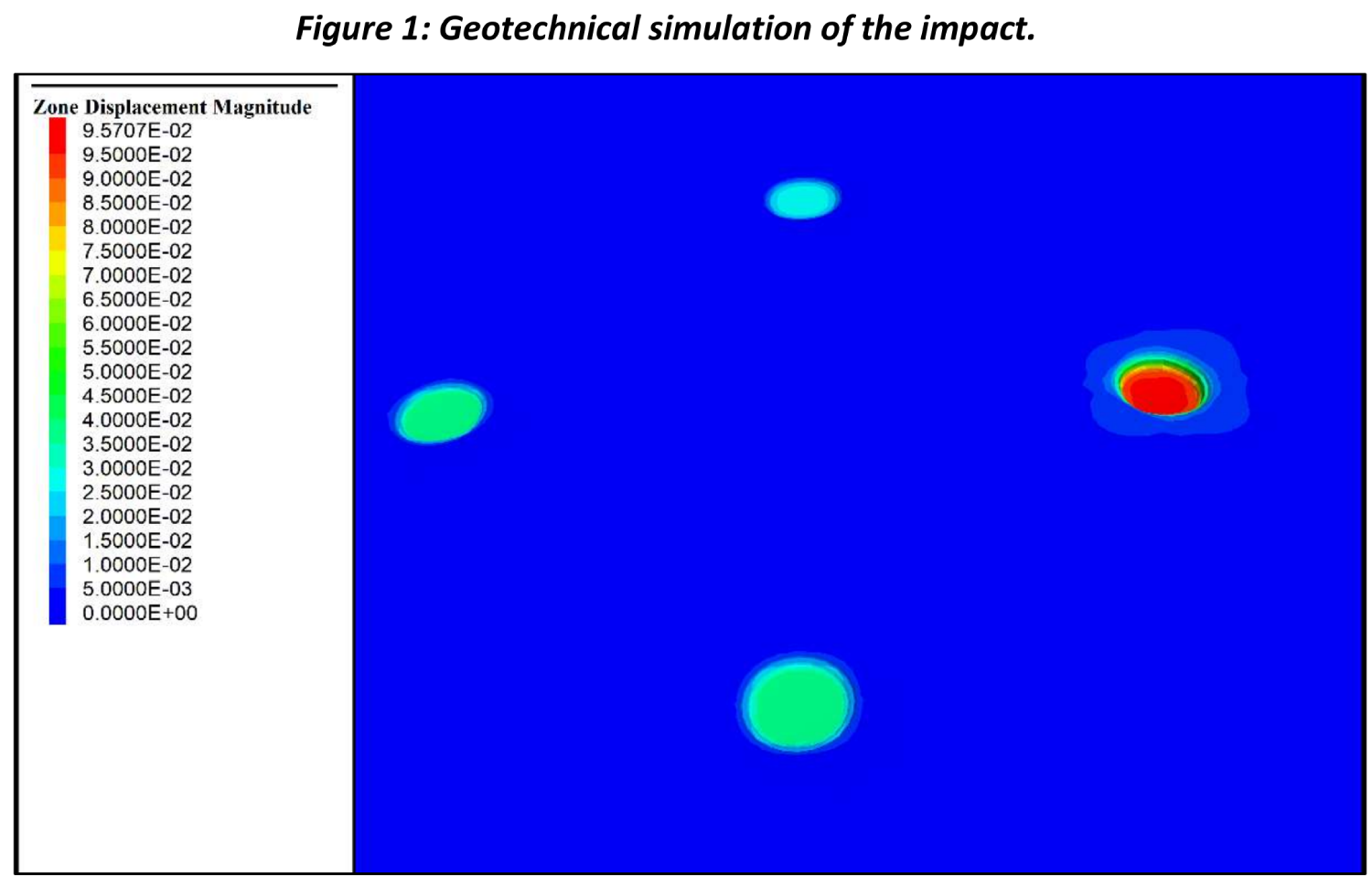
Field test campaign: To validate the adopted methodology and get more details about the impact dynamics, a field tests campaign has been performed with a full-size mock-up of the Landing Platform. The mock-up structure replicates the same shape and physical dimensions of the real L.P. but with a mass scaled from the original to compensate for the difference in gravity (Fig.2). It is equipped with an onboard triaxial IMU, capable of recording system speed and attitude during impact. The launching system, designed to reach desired velocities and address the touchdown conditions, consists of an inclined rail of steel girders and a quick release system. As an analogue of the regolith terrain material, we used the argillitic sub-unit of the “Argille Varicolori” formation, outcropping in southern Abruzzo and Molise regions in Italy. Geotechnical laboratory tests on terrain samples confirmed that the material is a good compromise between regolith and the clay-bearing lithology observed in the landing area. The material used has been prepared and left to dry in a quarry specialised in handling such material. Surface deformation has been measured with sub-centimetric accuracy through laser scanner point clouds realised before and after the tests (Fig.3). Eight different field test scenarios have been performed and subsequently replicated in FLAC3D for comparison. The test configurations were chosen to be representative of the variability of previous geotechnical simulations. The comparison, summarised in Table 2, displays a mean percentage difference of -0.8% (standard deviation of 8.5%), reaching a maximum of -15%. Deformation rates are also compliant with the ranges observed on Mars simulations, up to 10 cm in flat terrain conditions and up to 17 cm at 20° of the slope.
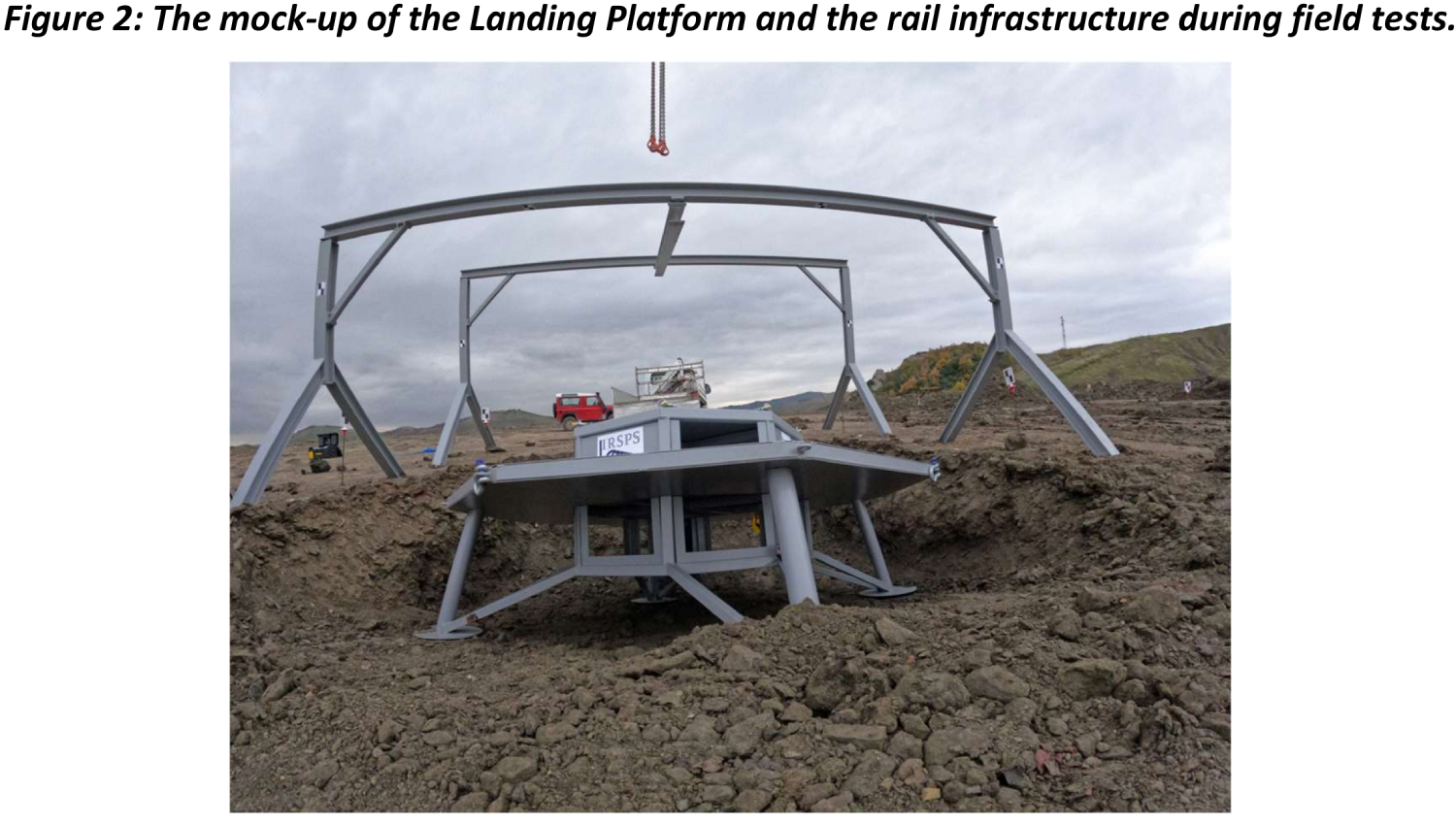
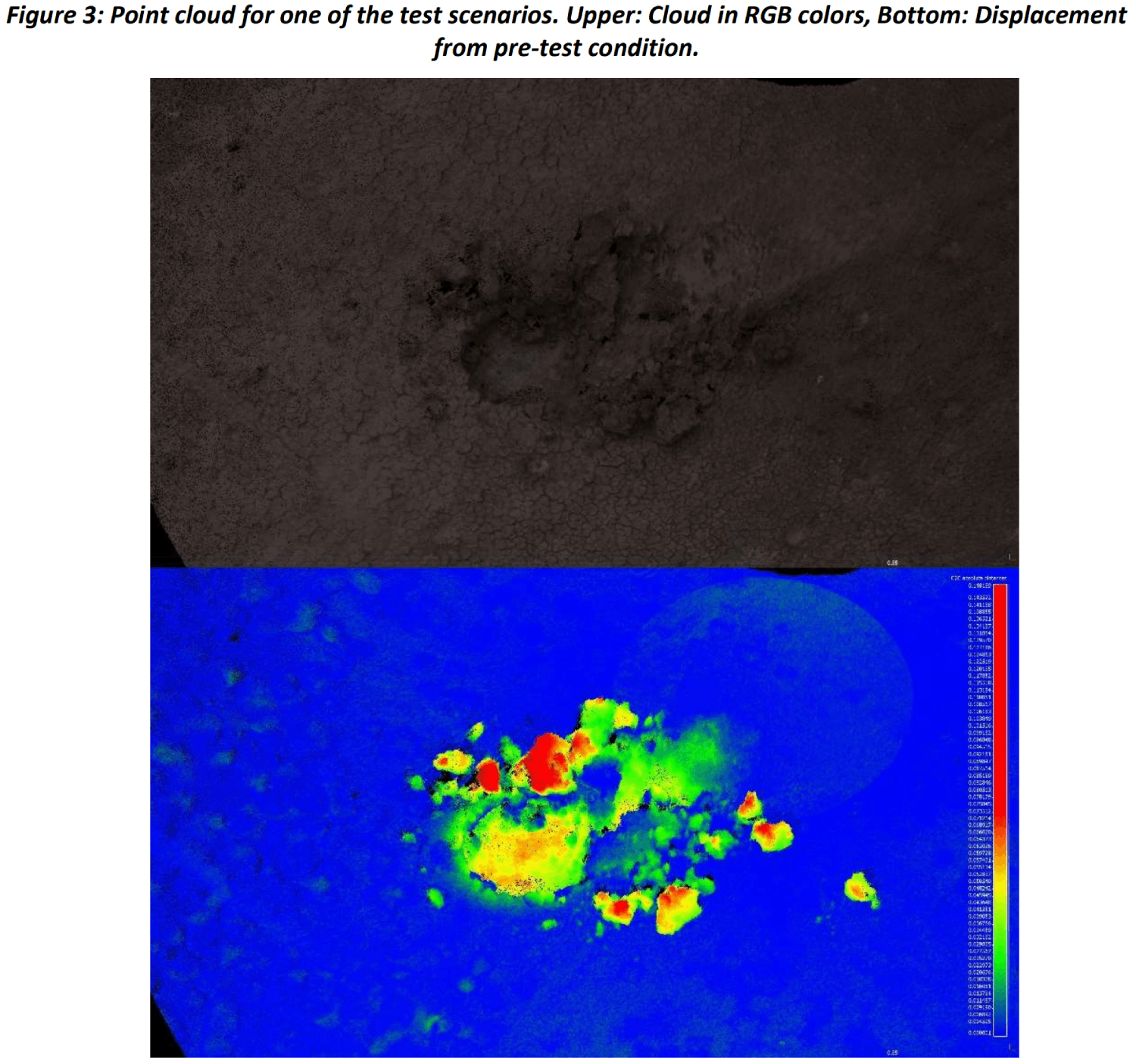
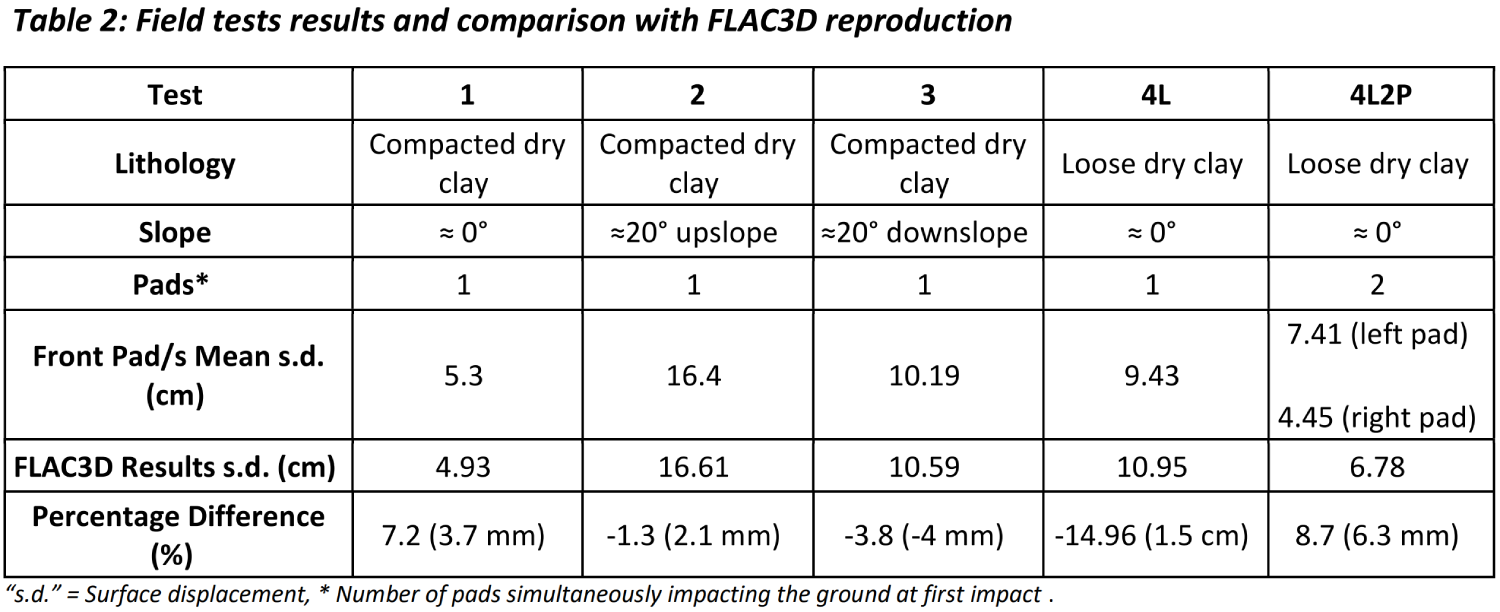
Conclusions: Surface deformation characterization studies have required the application of several simulations due to the wide variability of the physical, geological, and topographical factors involved. The field test campaign validated the methodology’s reliability and confirmed the expected deformation rates. The test results show that with significant thicknesses of regolith, the impact can lead to soil deformation rates ranging from five to more than twenty centimetres. Analyses of other lithotypes indicate more favourable results with negligible deformations due to not reaching the load bearing capacity. In both cases, the displacements should not reach values that compromise the onboard instrumentation, supporting landing safety in different surface conditions with a slope up to 20°.
References: [1] ESA (2013). ExoMars 2018 LSS UM Ref: EXM-SCI-LSS-ESA/IKI-003, Issue: 1.0, 17 Dec. 2013
How to cite: Tullo, A., Mancini, F., Aboudan, A., Calantropio, F., Martinez Barrio, A., Pacifici, A., and Ori, G. G.: Exomars landing: a geomechanical approach to impact characterization, Europlanet Science Congress 2022, Granada, Spain, 18–23 Sep 2022, EPSC2022-249, https://doi.org/10.5194/epsc2022-249, 2022.

